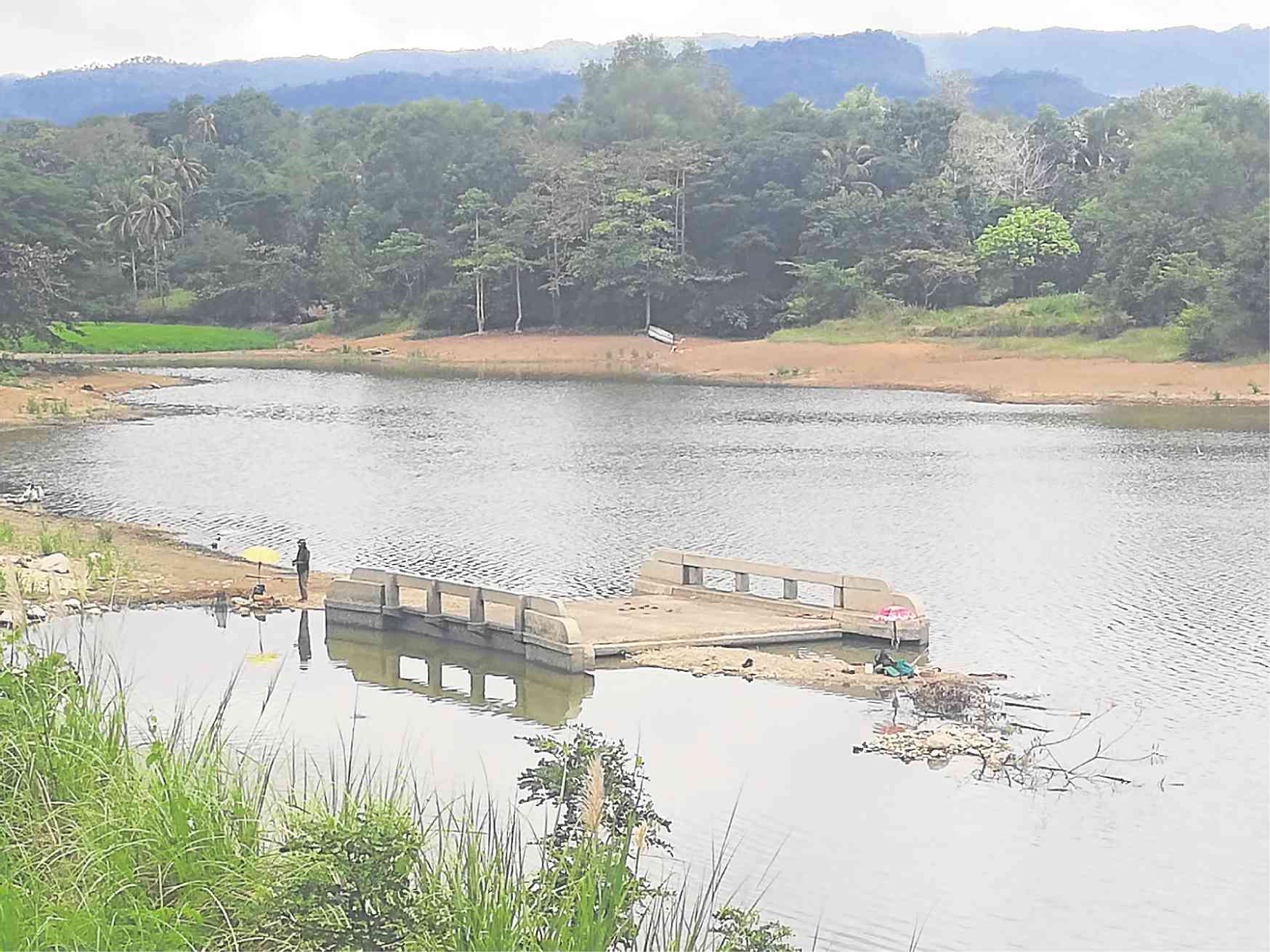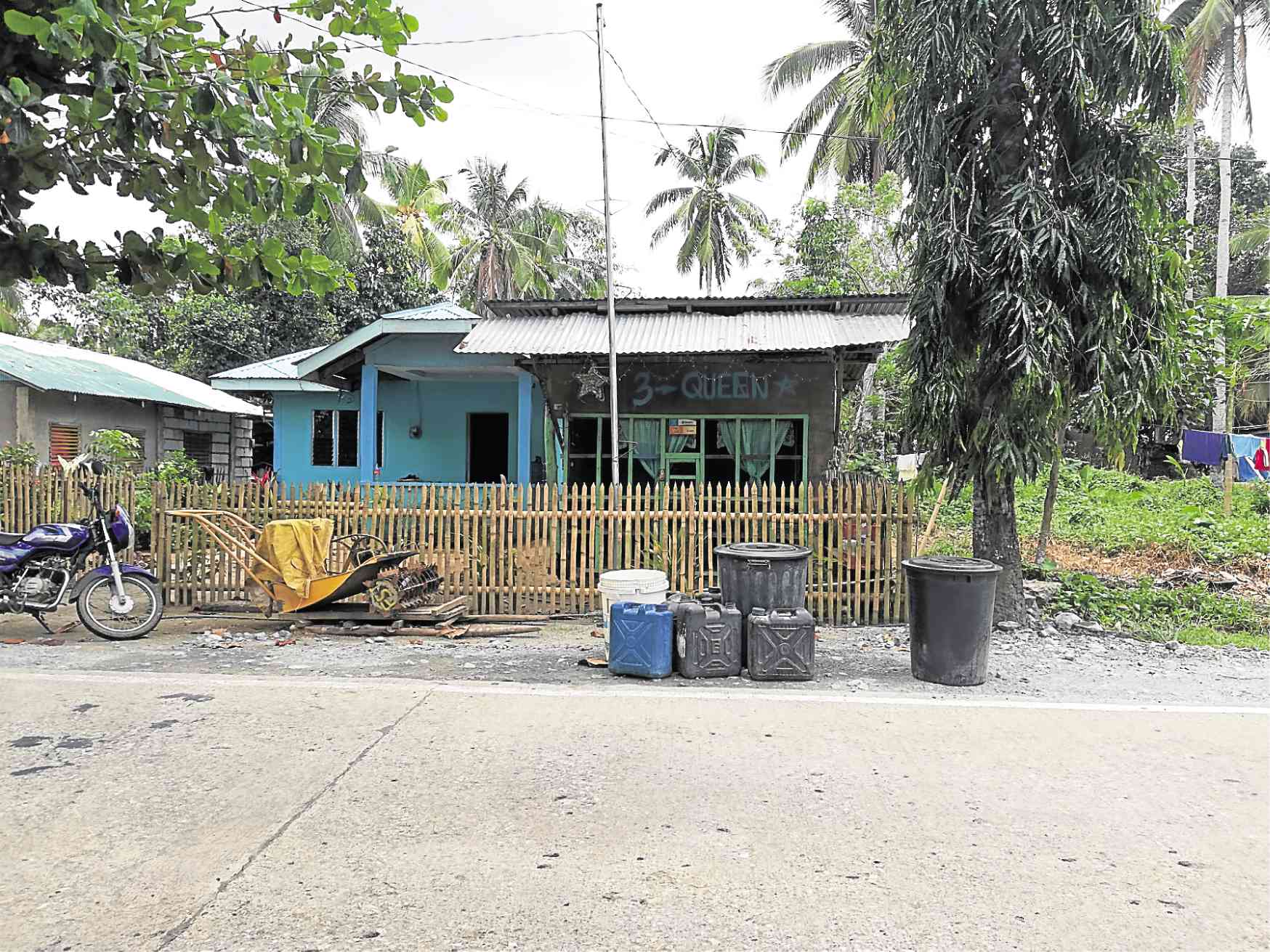Taps remain dry in Bohol villages

CRITICAL LEVEL Farmers and residents of Pilar town in Bohol province know that the water level in Malinao dam has dropped to critical level when an old bridge, which has been submerged by the reservoir, becomes visible. —LEO UDTOHAN
TAGBILARAN CITY, Bohol, Philippines — Laura Amparo-Oyangorin has been fetching water from a deep well a few meters from her house in Sierra Bullones town, Bohol province, after her tap went dry in July.
Since the water from the well was not potable, Oyangorin had to buy mineral water at P30 per 5-gallon container for her family to drink.
This had been the new normal among residents in eight villages in Sierra Bullones after their water supply dwindled.
“Our situation is so difficult because until now, we have no water,” said Oyangorin, a mother of three.
Affected by the water shortage are the villages of Poblacion, Salvador, San Agustin, San Jose, San Juan, Bugsoc, Santa Cruz and Villa Garcia.
Article continues after this advertisementState of calamity
Article continues after this advertisementSaturnino Daguplo Jr., municipal assessor and information officer, said the town had been placed under a state of calamity to allow the local government to tap its emergency funds to help residents cope with the water shortage.
Daguplo said local officials suspected that the earthquake in July might have disrupted the underground water supply, which led to a serious depletion of the local reservoir.
The town government has started deploying fire trucks to deliver water to households. It said it was also planning to buy water pumps.
But it was not only Sierra Bullones that had been affected by water shortage.
A pumping station in Candijay town had not been supplying water to the villages of Cogtong, Can-Olin and Tawid after the reservoir dropped to a critical level.
“Let us all pray to God for His intervention. Let us also do our part by conserving water whenever we can,” said Jeryl Lacang-Fuentes, Candijay municipal disaster risk reduction and management officer.
No rain
Farmers have also been complaining of lack of rain, which destroyed 7,244.44 metric tons of palay (unhusked rice) and other crops worth P122 million. These crops were planted in 7,863 hectares of rain-fed farms in 22 towns, according to the consolidated report by the Provincial Agriculturist Office.
While Luzon farms enjoy rain at this time, irrigation dams in Bohol, considered the “rice bowl of Central Visayas,” were drying up.
The water levels in four dams—Malinao in Pilar town, Bayongan in San Miguel town, Capayas in Ubay town and Zamora in Talibon town—had dropped to critical levels.
Malinao, the biggest of the four dams, supplies water to 4,740 ha of rice fields in the towns of Pilar, Ubay, San Miguel, Dagohoy and Alicia. Capayas dam provides water to 1,160 ha in Ubay.
Water level at Malinao dam dropped to 146 meters, below its normal level of 152 meters.
Larry Pamugas, acting provincial agriculturist, advised farmers not to plant rice in rain-fed areas because of the below normal rainfall.
Instead, he told them to plant other crops, like corn and cassava, which could withstand drought.

DWINDLING SUPPLY Villagers in Sierra Bullones town in Bohol province leave pails and containers along the road as they wait for fire trucks that will bring water to their communities. Water supply in the town has been dwindling since July. —LEO UDTOHAN
Pamugas also urged farmers to make sure that their crops were covered by the government-run Crop Insurance Corp. of the Philippines to cushion the impact of the dry spell and other natural calamities on their produce.
Losses
Martiniano Soliano, 69, a resident of Barangay Poblacion in Pilar, was worried that there would be nothing to harvest in October after his palay seedlings turned yellow when their fields started to dry up.
During the harvest in March, his 1-ha farm yielded only 14 sacks of rice, instead of the usual 40 sacks.
“I lost big due to lack of rain,” he said.
Soliano said he would shift to planting sweet potato and cassava to survive the drought.
Antonio Mondano, 62, of Barangay Lucob in Calape town, said it had been three months since the last downpour.
Mondano said he started planting mung bean on
the family’s 500-square-meter farm since this required less water.
“There is still September, October. Maybe the heavy rain would finally come. Who knows?” he said.